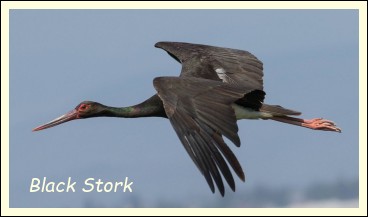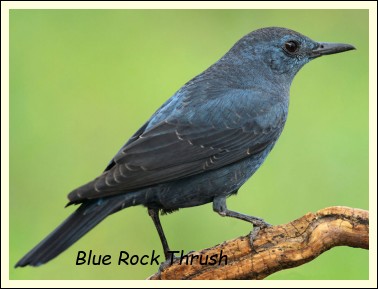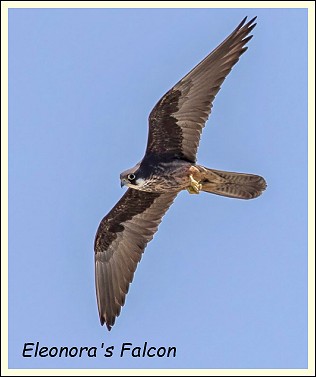|
Despite having booked for Iceland in both Spring 2020 and 2021 the Pandemic restrictions meant these trips didn't go. Instead Naturetrek offered me a place on their Majorca trip September 18th - 25th, 2021. Having been birding there several times in the past (including a tenth anniversary trip with the KOS in 1984) I was aware that I probably wouldn't see any new species there but it would be good to reacquaint myself with a number of special birds.
Previous trips had all been in the Spring but this one was in the Autumn, migration time. Based at the Pollentia Club resort on the coast there was access to the Albufereta Reserve, where in 1979 my wife and I saw our first Black Stork (on passage) during a trip with Ornitholidays. migration time. Based at the Pollentia Club resort on the coast there was access to the Albufereta Reserve, where in 1979 my wife and I saw our first Black Stork (on passage) during a trip with Ornitholidays.
Blackbirds and House Sparrows were common in the grounds and Cetti's Warblers called all day long. From the hide there were regular sightings of hunting Marsh Harriers, Little and Cattle Egrets (100+ of the latter one day at dawn, about 7.30 a.m.) and Herons. Wood Pigeons were everywhere, despite their relative rarity back in the 1970s. Waders included Greenshanks, Black-Winged Stilts, Dunlins, Green and Common Sandpipers. There were even 'wintering' Greater Flamingos! On the coast we regularly saw handsome Audouin's Gulls as well as the ubiquitous Yellow-Legged Gulls. A nearby wood produced close views of a lovely Firecrest.
A couple of visits to the famous Boquer Valley produced several sightings of the resident Black (Cinerous) Vultures with their barn door (9 feet) wingspans. Also Griffon Vulture and both dark and light phase Booted Eagles. Redstarts and a good number of Mediterranean (now split from Spotted) flycatchers were in the fields and a Hoopoe put in an appearance but there was a distinct absence of larks and buntings as the vegetation had been withered by a particularly long, hot summer. Higher up there were Crag Martins and Blue Rock Thrush. Lightning flashed and thunder rolled but at least we had no repeat of the cloudburst. Walking back I even saw a vagrant Green Woodpecker but no one else was near
so it didn't feature in the trip report. Lightning flashed and thunder rolled but at least we had no repeat of the cloudburst. Walking back I even saw a vagrant Green Woodpecker but no one else was near
so it didn't feature in the trip report.
Equally famous, the extensive Albufera Reserve near Alcudia required two visits. The first didn't start well as a violent storm blew up soon after we arrived. Torrential rain and gale-force winds drove us back to the minibus, soaked through. The water quickly rose in the car park and in the streets with vehicles breaking down so we retreated to the hotel. A later visit produced several special birds including Purple Gallinules and Marbled Ducks (one lucky person photographed a Red-Knobbed Coot.). Also locally rare Black-Tailed Godwits.
An Osprey landed in front of the hide and sat on a pile of vegetation for a long time, only a few yards away. Another Osprey also appeared nearby. Stunning views of both birds.
Following the storm migrants were grounded and a visit to the Water Treatment Works south of the Albufera turned up a Woodchat Shrike, a Glossy Ibis and lots of Yellow Wagtails, Stonechats, Whinchats plus the occasional Wheatear, all busy feeding up. A Woodchat Shrike of the local race was seen, also Red Kites were in the offing (4 were seen on the last day crossing the island en route to the airport). Stone Curlews were seen in local fields, also Serins and even wintering Common Starlings.
At 4,740 feet Puig Mayor is the highest mountain on Majorca and part of the Tramuntana Range, although the radar station on its peak wasn't always visible when we walked round the Cuber Reservoir where we saw Red Crossbills, an obliging Wryneck and repeat views of Black and Griffon Vultures and several Booted Eagles, not to mention more familiar birds like Sardinian Warbler, Chaffinch and Goldfinch. 2 Ravens passed over and a solitary Great Cormorant sat at the edge of the water.
Perhaps the highlight of the week was a visit to the Formentor Peninsula and the Lighthouse at its furthest point. Here could be seen numbers of agile Eleonora's Falcons out over the sea, highlighted by bright sunshine. They are late breeders so autumn is the best time to see them, preying on small migrant birds to feed to their young. Graceful in their twisting flight, watching them was hypnotic. A run-in with a Peregrine added to the excitement. There was a constant stream of Swallows and House Martins on passage plus other passerines. sunshine. They are late breeders so autumn is the best time to see them, preying on small migrant birds to feed to their young. Graceful in their twisting flight, watching them was hypnotic. A run-in with a Peregrine added to the excitement. There was a constant stream of Swallows and House Martins on passage plus other passerines.
After a mixed week of weather our final day proved to be very hot (above 30C) and sunny. We had a morning trip to the nearer part of Formentor and after a longish search we had excellent views of 2 Balearic Warblers, a split from Marmora's so technically a new species for me. (The day after return to the UK there was apparently a land slip that blocked the Formentor road so luck was with us.) A group list close to 100 species was pretty good for the time of year and as previously I thoroughly enjoyed visiting this magic island and would recommend it to anyone who hasn't birded there.
(Postscript: Much as I would like to visit Iceland and see a gyr falcon, Majorca may have been my swan song for overseas birding with my increasing mobility problems and the continuing restrictions on travel due to the Pandemic. Still I've had many great trips over nearly 50 years so I can't really complain..)
Bob Groom
|
 migration time. Based at the Pollentia Club resort on the coast there was access to the Albufereta Reserve, where in 1979 my wife and I saw our first Black Stork (on passage) during a trip with Ornitholidays.
migration time. Based at the Pollentia Club resort on the coast there was access to the Albufereta Reserve, where in 1979 my wife and I saw our first Black Stork (on passage) during a trip with Ornitholidays. Lightning flashed and thunder rolled but at least we had no repeat of the cloudburst. Walking back I even saw a vagrant Green Woodpecker but no one else was near
so it didn't feature in the trip report.
Lightning flashed and thunder rolled but at least we had no repeat of the cloudburst. Walking back I even saw a vagrant Green Woodpecker but no one else was near
so it didn't feature in the trip report. sunshine. They are late breeders so autumn is the best time to see them, preying on small migrant birds to feed to their young. Graceful in their twisting flight, watching them was hypnotic. A run-in with a Peregrine added to the excitement. There was a constant stream of Swallows and House Martins on passage plus other passerines.
sunshine. They are late breeders so autumn is the best time to see them, preying on small migrant birds to feed to their young. Graceful in their twisting flight, watching them was hypnotic. A run-in with a Peregrine added to the excitement. There was a constant stream of Swallows and House Martins on passage plus other passerines.